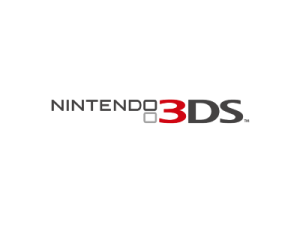| pp2d | |
|---|---|
 | |
| General | |
| Author | wrathsoffire76 |
| Type | Developments |
| Version | 2018 |
| License | GPL-3.0 |
| Last Updated | 2018/02/26 |
| Links | |
| Source Only Download | |
| Website | |
| Source | |
| This application has been obsoleted by one or more applications that serve the same purpose, but are more stable or maintained. |
pp2d, also known as Plug & Play 2D, is an unofficial graphics rendering helper to use with libctru and citro3D.
Note: Use citro2d instead. This code is not supported by the devkitPro team and may not work if there are breaking changes in the libraries on which pp2d depends.
User guide
Using pp2d
In order to initialize pp2d's working variables, you'll need to call void pp2d_init(void);. Note that this already calls gfxInitDefault(); and C3D_Init(C3D_DEFAULT_CMDBUF_SIZE); by default. void pp2d_exit(void); frees all the pp2d variables instead. Here are functions you're required to actually render things to the screens.
void pp2d_frame_begin(gfxScreen_t target, gfx3dSide_t side);begins a frame.void pp2d_frame_draw_on(gfxScreen_t target, gfx3dSide_t side);changes the screen target.void pp2d_frame_end(void);ends a frame. In order to start rendering a texture, you'll need to usevoid pp2d_texture_select_part(size_t id, int x, int y, int xbegin, int ybegin, int width, int height);. Note that this discourages using separate textures. After you used the said function, you can use the following functions in any order:void pp2d_texture_blend(u32 color);void pp2d_texture_depth(float depth);void pp2d_texture_flip(flipType_t fliptype);void pp2d_texture_position(int x, int y);void pp2d_texture_rotate(float angle);void pp2d_texture_scale(float scaleX, float scaleY);You can use none of them or each of them, depending what you need to do. After that, usingvoid pp2d_texture_queue(void);will add the vertices into the linear buffer the GPU will use to render them. If you're an advanced user and know what you're doing, you can usevoid pp2d_draw_arrays(void);once you filled the linear memory with the vertices you need to draw from a single spritesheet. You can also avoid calling this though, it will be handled automatically from pp2d, in particular when callingvoid pp2d_frame_draw_on(gfxScreen_t target, gfx3dSide_t side);andvoid pp2d_frame_end(void);. Check the example for more details.
Past issues
pp2d used to misuse the command buffer, the CPU and the GPU. Here are the details.
TEXTURE BINDING:
Texture binding was performed each time pp2d_texture_draw() was called. This has been solved by storing the last used spritesheet's infos inside pp2d, in order to bind a new texture only when it's necessary. This doesn't solve texture binding issues alone. A behaviour that was encouraged in the old pp2d was to have multiple single texture loaded in memory, rather than a single spritesheet containing them all.
Relying on a single spritesheet to contain all the textures (or at least all the static ones) will increase performance and reduce CPU usage, because you're not going to bind different textures every time you want to draw a different sprite on screen. To use the new pp2d in the best way, you'll be required to write your own spritesheet handler. You can find a really simple and barebone example of spritesheet handler in the example. More advanced examples will come in the future. In order to discourage having multiple textures rather than just one spritesheet, PP2D_MAX_TEXTURES's default value is 1. You can change this by sending a different value through the Makefile if you need more, though.
TEXTURE BLENDING:
Same as texture binding, texture blending was performed each time you used pp2d_texture_draw(), making you waste lots of power. Now, pp2d only changes blend parameters when you use a different blend color than the past one. This also applies to the text color. It was changed each time a function from the pp2d_draw_text family was called, instead it's now called only the first time you start rendering text after you rendered something different, like a sprite or a rectangle.
// blending
if (changeColor)
{
prevColor = pp2dBuffer.color;
...
}
TEXTURE TILING:
In order to convert textures to the proper tiled format, the old pp2d used some weird operations relying on the CPU. It now uses the proper citro3D functions to do that.
TEXTURE RENDERING:
In the old pp2d, C3D_DrawArrays was used in each pp2d_texture_draw() call because the last used spritesheet wasn't stored somewhere into pp2d, causing the command buffer to be misused. Now, when pp2d recognizes you just need to render from the same spritesheet, it will render everything at once before binding a new texture.
Media
PP2D Screen Transition Test (blujay)
Known issues
The white color RGBA8(0xFF, 0xFF, 0xFF, 0xFF) causes blending issues. This could be fixed by changing the blending portions to modulate the colors better. There are simple workarounds though, like using RGBA8(0xFE, 0xFE, 0xFE, 0xFF) as white color.
Texture rotation is actually done CPU-side. This could waste some CPU usage in case you really need to rotate multiple sprites per frame.